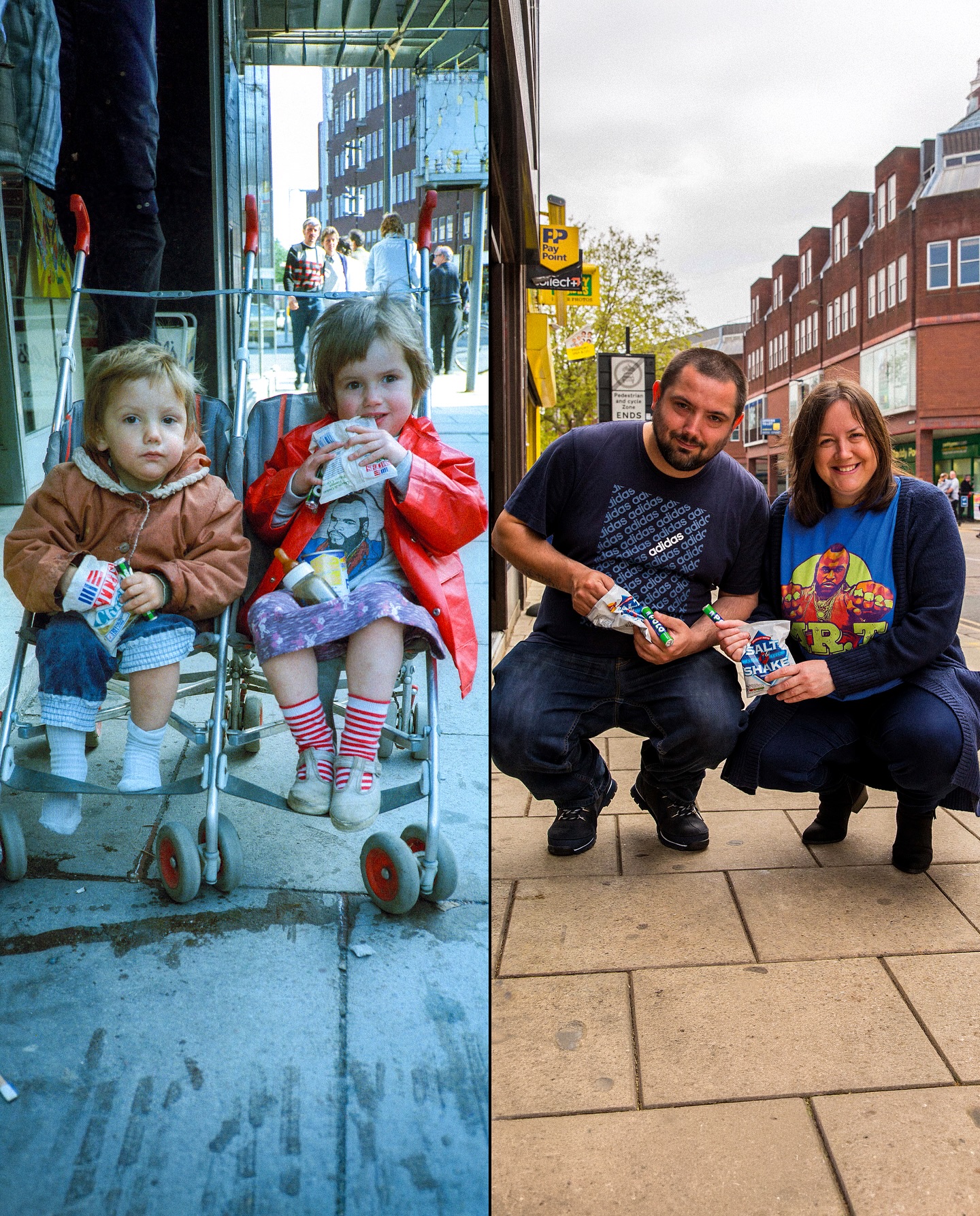Photographer Chris Porsz Spent Over 40 Years Tracking Down Strangers He Once Captured in the Streets — and His Recreated Portraits Tell the Most Beautiful Story of Time
Some people collect postcards, others collect memories. But for Chris Porsz, a retired paramedic from Peterborough, England, his life’s collection came through a lens — a series of spontaneous, unplanned portraits of strangers taken on the streets in the late 1970s and 1980s. What began as a hobby has turned into one of the most moving photographic projects of modern times: a visual time capsule that reconnects past and present, showing how people and life itself evolve.
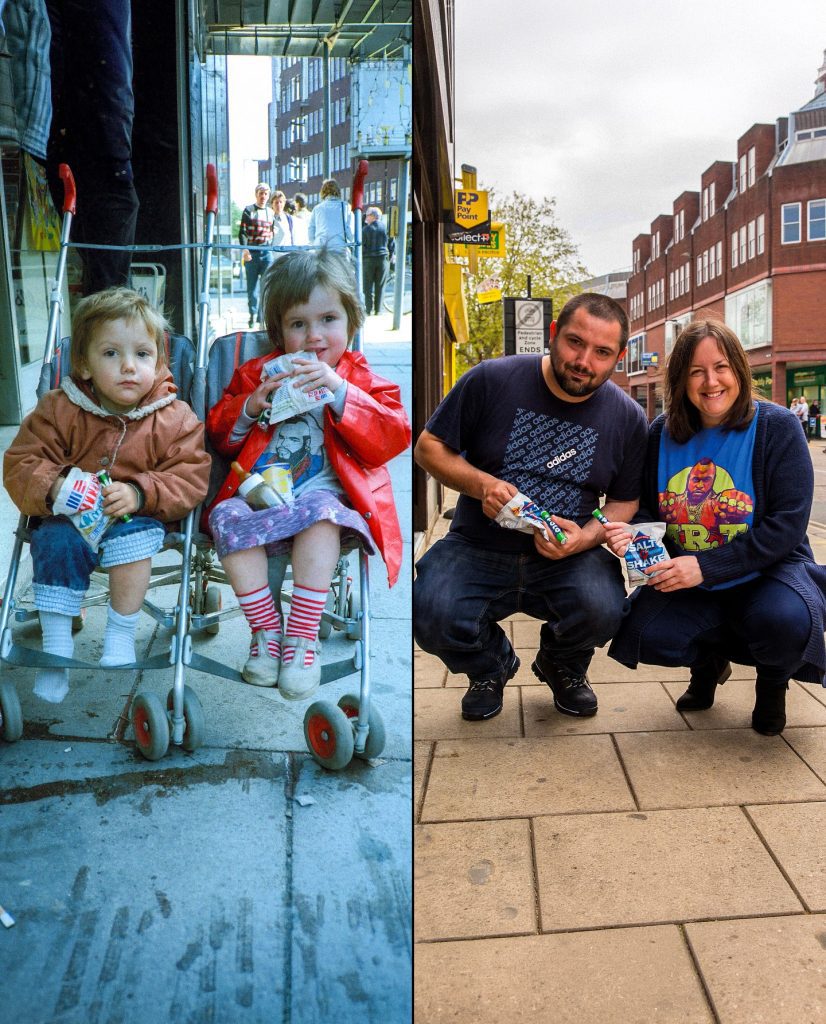
Over four decades after capturing his first street shots, Porsz has spent years tracking down those same people — often after decades apart — and photographing them again, in the exact same places, with the same poses, and sometimes even the same props. The result is nothing short of extraordinary. The project, aptly titled Reunions, bridges generations and emotions, blending nostalgia, change, and the quiet passage of time in a way that feels both universal and intimate.

The contrast in these portraits — a young boy now standing as a grown man in the same doorway, two teenage friends now reunited with families of their own — goes beyond photography. It’s about human connection and the story of how moments that once felt ordinary become priceless when revisited years later.
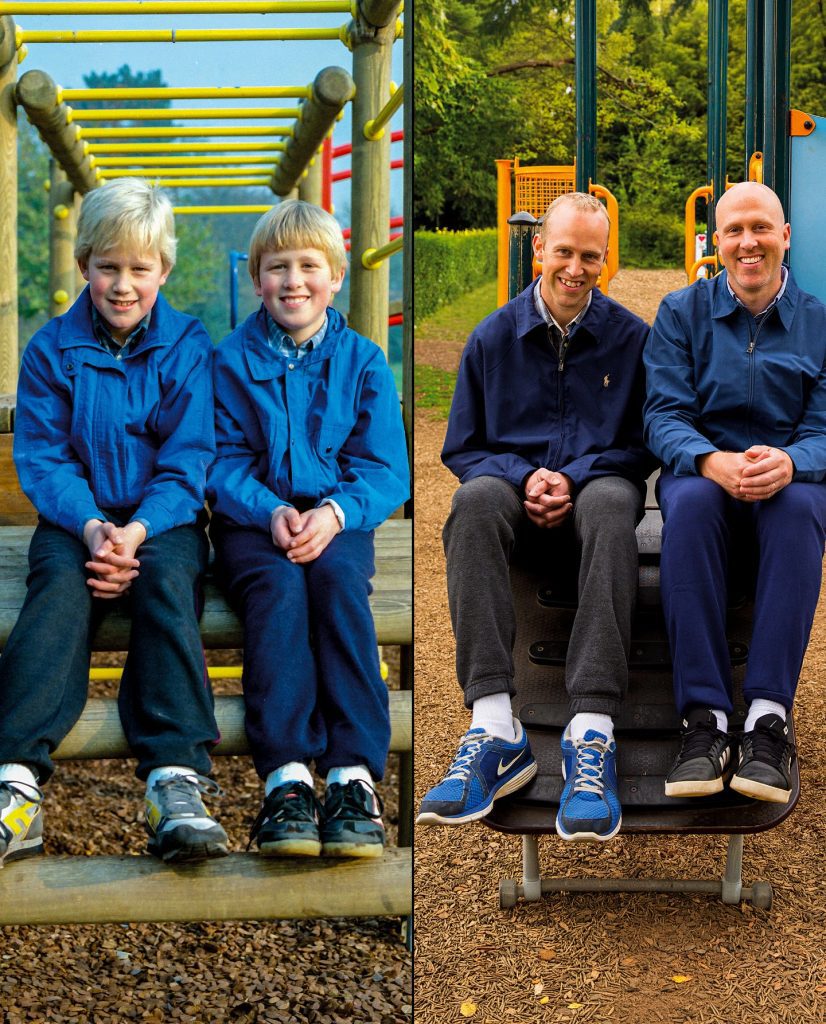
Porsz, who describes himself as a “people watcher with a camera,” first began photographing people in the streets of Peterborough when he was in his twenties. Back then, he wasn’t thinking about making art or publishing books. He was simply fascinated by the human stories that unfolded around him — the bus stops, the market stalls, the laughter outside a café, the children playing along the pavement. “I liked photographing real life,” he said. “It was raw, honest, and fleeting. These were people just being themselves.”
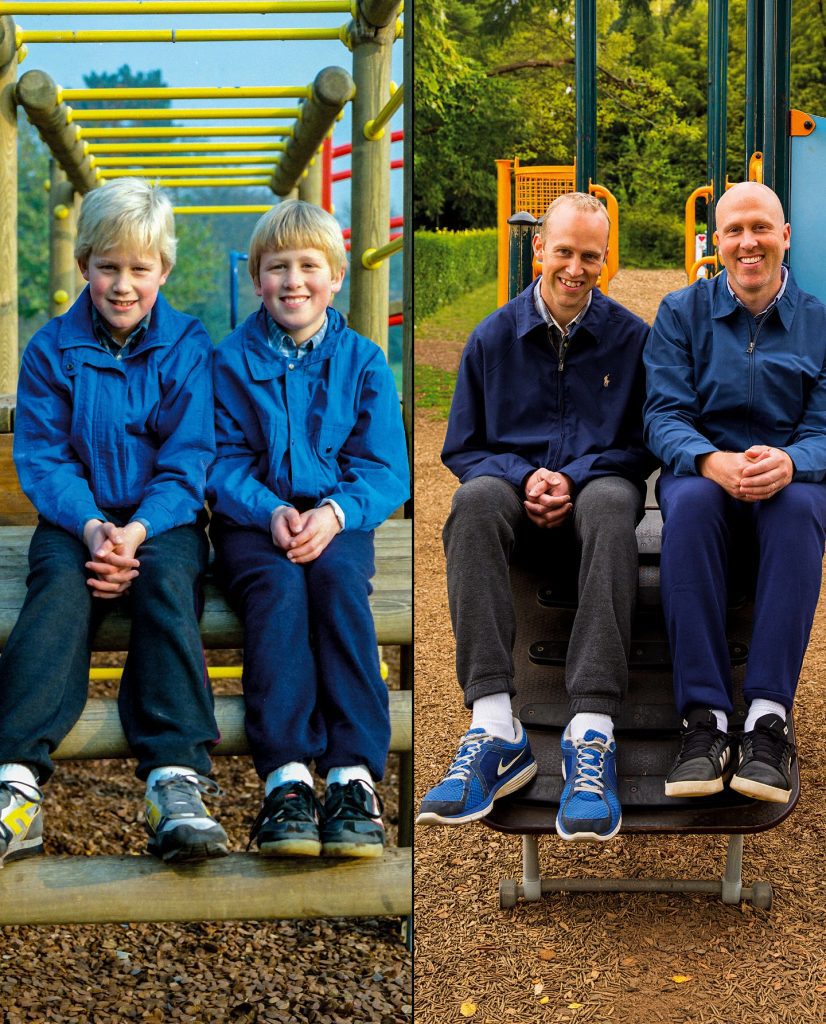
Decades later, when he rediscovered those old negatives stored away in boxes, something stirred in him. “I began to wonder where they were now,” he explained. “What became of them? Did they remember that day? Did they even know I took their photo?”
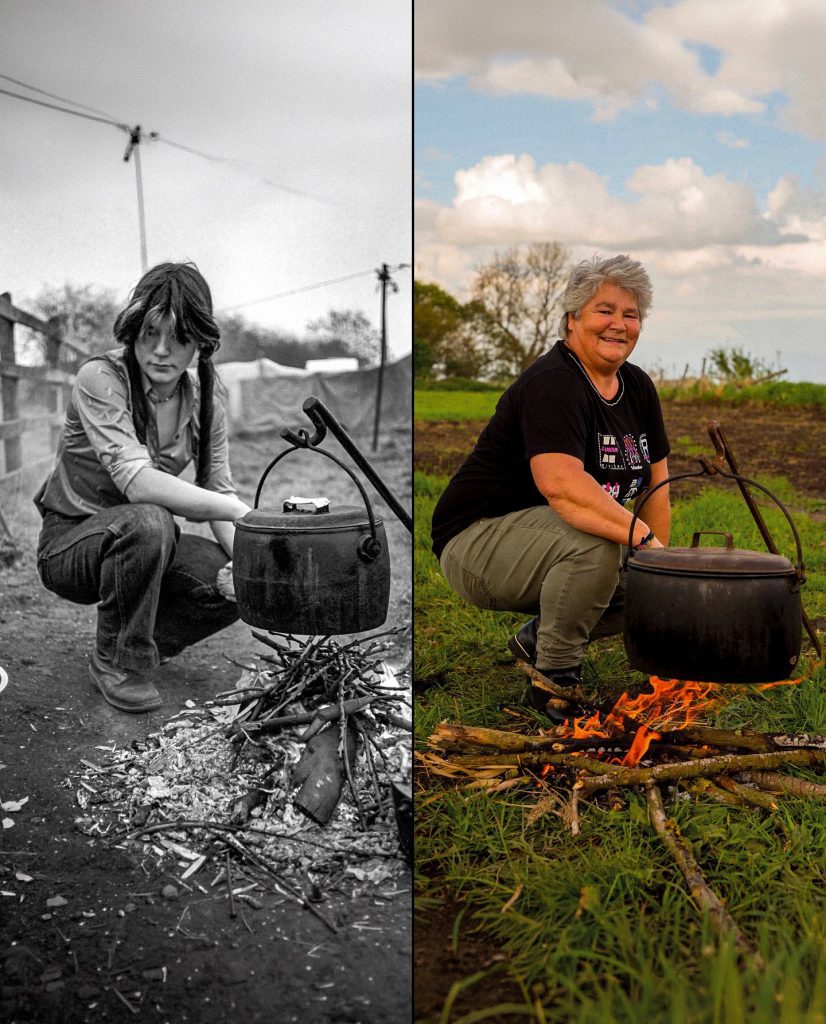
The curiosity became a mission. Using social media, local news outlets, and pure determination, Porsz began the long process of tracking down his subjects. Some were still in Peterborough, others had moved away. Many had built families, some had changed careers, and a few had sadly passed away. But to his amazement, hundreds of people responded, thrilled to learn that their long-forgotten image was part of a visual history — a frozen frame of their youth.
Recreating the scenes wasn’t always easy. Some of the locations no longer existed. Buildings had been replaced, streets had changed, and fashions were long gone. But that was part of the magic. The juxtaposition between then and now told stories words couldn’t fully capture. It wasn’t just about the people; it was about how time itself shapes everything — faces, cities, and lives.

The portraits themselves radiate emotion. One of the most striking is of two siblings sitting on a curb in the late 1970s, squinting into the sun — a candid, almost accidental shot. Decades later, the same brother and sister sit in nearly the same spot, smiling warmly at the camera, older, wiser, but unmistakably the same pair. Their bond, visible even as children, still shines through.
Another photo shows two young nurses, laughing outside Peterborough District Hospital in the early ’80s. Their matching uniforms and carefree expressions capture the spirit of youth and camaraderie. Fast forward more than 30 years, and Porsz found them again — both now mothers, still smiling, their friendship intact.

There’s also a picture of a father and son in front of a classic car garage — once a symbol of work and aspiration. When the pair reunited decades later, the father was gray-haired, the son now a father himself. The same affection in their eyes remained, the same pride in their posture. The image is a quiet testament to legacy and love — the kind of emotional storytelling that has made Porsz’s work beloved worldwide.
The project has expanded over time, eventually published into two best-selling books, Reunions and Reunions II, both created in collaboration with writer Jo Riley, who helped interview many of the subjects to include their personal reflections. Those stories — often heartfelt, sometimes humorous — bring the photographs to life. One woman, upon seeing her teenage portrait, laughed, “I can’t believe the hair! But that girl — she’s still in there somewhere.” Another man admitted, “I didn’t realize how happy I looked back then. Life’s had its ups and downs, but I’m proud of where I’ve come.”
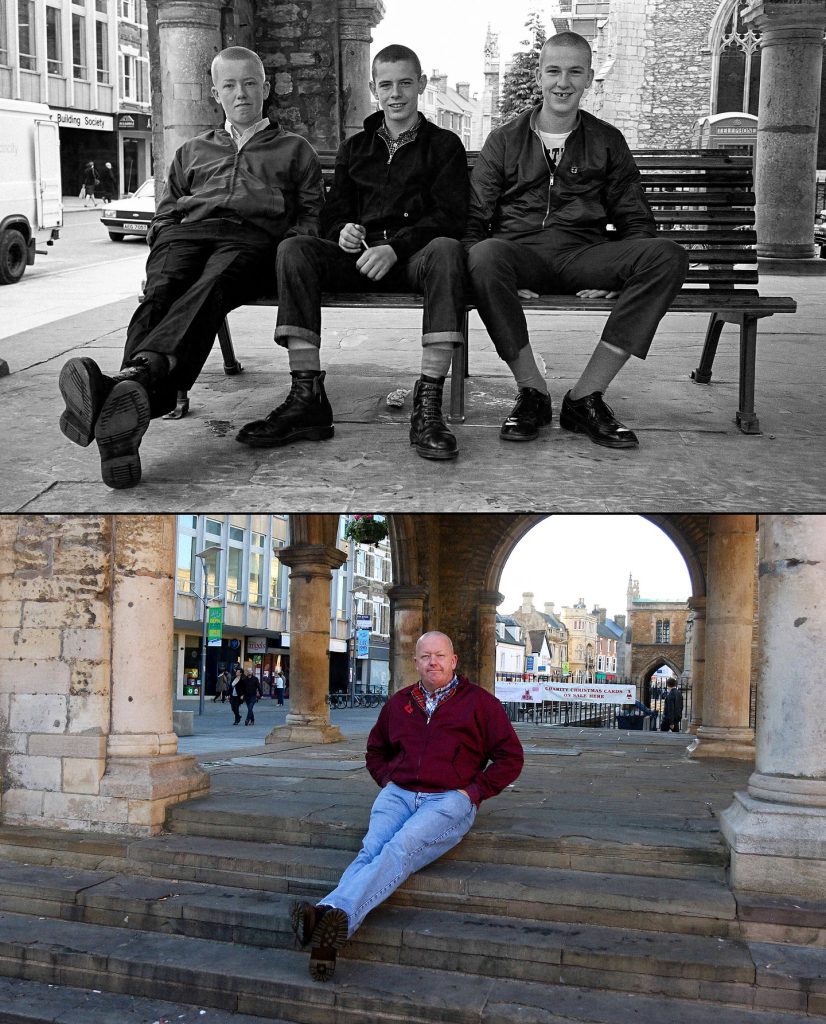
For Porsz, the emotional reactions from his subjects have been the most rewarding part. “People have cried, laughed, hugged me — it’s incredibly moving,” he said. “For many, those photos bring back not just memories of themselves, but of loved ones who are no longer here. It’s like reopening a time capsule you didn’t know existed.”
The project has touched audiences far beyond Peterborough. It has been featured internationally — from the BBC to newspapers across Europe and the United States — and has inspired other photographers to revisit their own archives. In a world obsessed with the fleeting nature of digital images, where photos disappear as fast as they’re posted, Porsz’s project reminds us of the permanence of human stories.
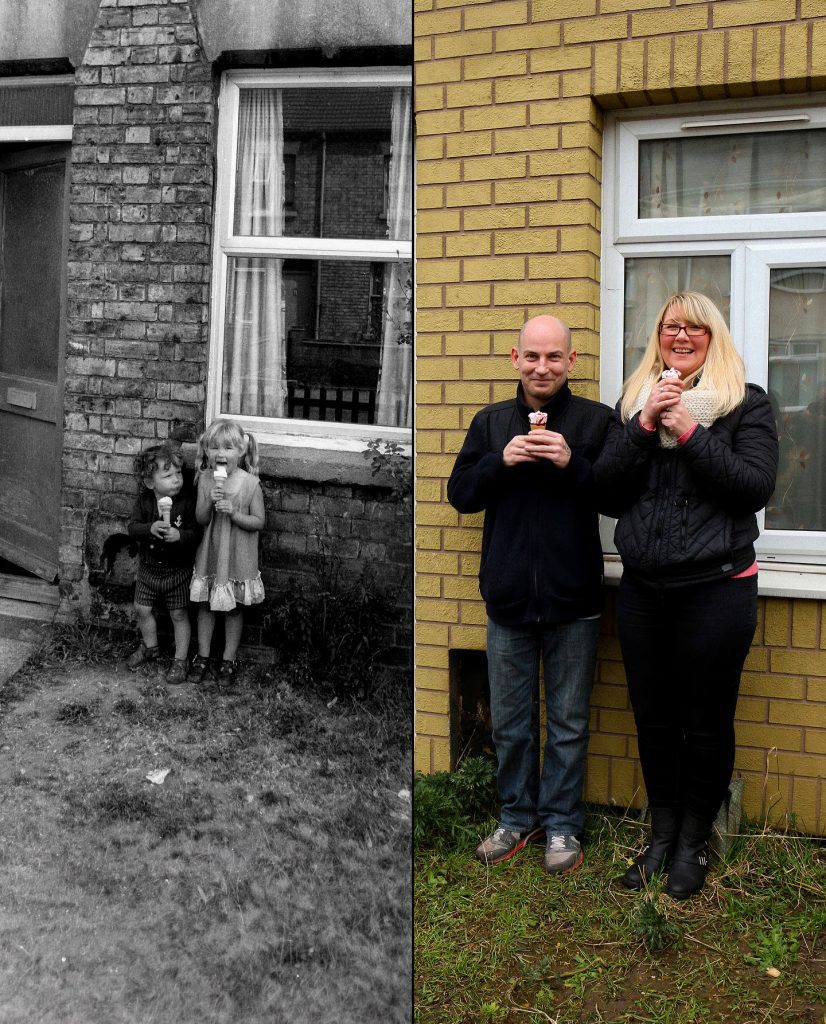
What stands out most is his patience. This was not a quick viral experiment. It was a four-decade journey built on persistence, empathy, and respect for the people whose lives he documented. “I didn’t just want to take their photos again,” he explained. “I wanted to honor them — to show how beautifully they’ve aged, how life has shaped them, and how time connects us all.”
There’s something deeply profound about seeing a person age in the same spot — a visual metaphor for the passage of time itself. The faces tell stories of joy, struggle, resilience, and change. Some of the subjects shared that they had completely forgotten being photographed until they saw their younger selves again. “It’s like meeting a version of yourself you left behind,” one man said. “It’s strange but also comforting.”
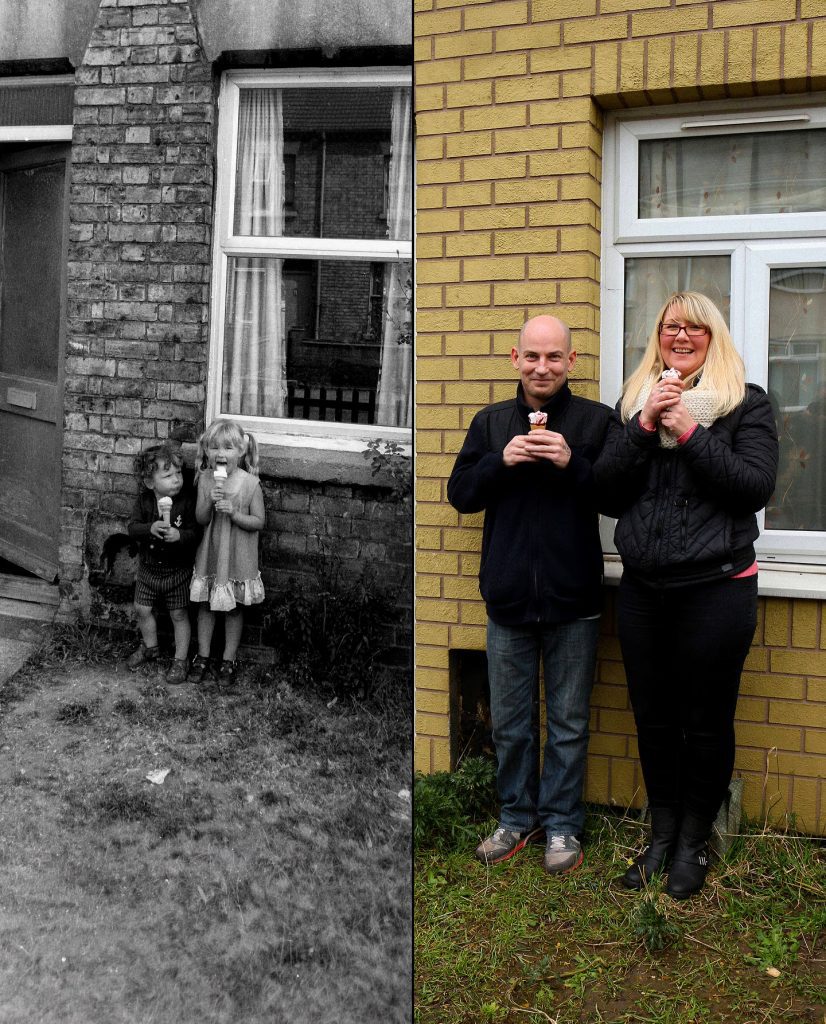
Porsz believes that his years working as a paramedic shaped how he sees people. “When you work in emergency medicine, you meet people at their most vulnerable,” he said. “It teaches you empathy. You learn that every person — no matter how ordinary they seem — carries an incredible story.”
That compassion radiates through his photographs. He doesn’t glamorize his subjects, nor does he romanticize their pasts. Instead, he captures their humanity with warmth and honesty — both then and now. His work invites us to slow down, to reflect on how much can change in a lifetime, and how much can stay the same.
Today, Chris Porsz continues to photograph and connect with his community. Though retired from the NHS, he remains deeply involved in creative and charitable projects, using his photography to support local causes and inspire younger generations to value authentic storytelling. “You don’t need fancy equipment,” he often says. “You just need curiosity — and time.”
And time, as his work proves, is the most powerful storyteller of all.
In an age where everything feels temporary — where memories live and die in our phones — Porsz’s portraits stand as living proof that the simplest moments can become the most profound. The children in his photos grew up, the friends drifted apart and found their way back, the streets evolved, but the essence of life — the fleeting beauty of everyday connection — remained.
Chris Porsz didn’t just photograph people. He built a bridge between who they were and who they’ve become. His “Reunions” remind us that every face, every moment, every street corner holds a story worth revisiting. And sometimes, the most extraordinary art is born not from the pursuit of fame or perfection, but from a lifelong commitment to seeing — truly seeing — the people who pass us by.

